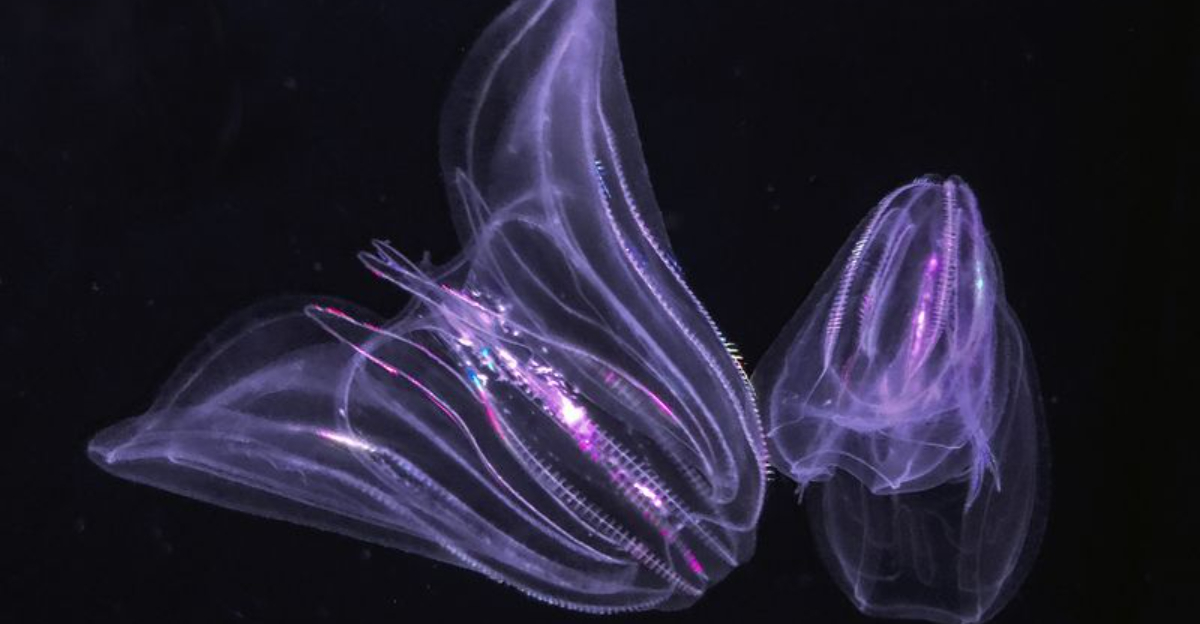Florida’s coastline becomes a dazzling light show after dark, thanks to some truly remarkable marine creatures.
These underwater wonders create their own light through bioluminescence, casting an enchanting blue glow across the water. I’ve spent countless nights kayaking through these glowing waters, and every time, I’m still in awe.
Let me take you on a journey to meet the mysterious creatures responsible for this breathtaking natural phenomenon.
The Tiny Titans: Pyrodinium bahamense
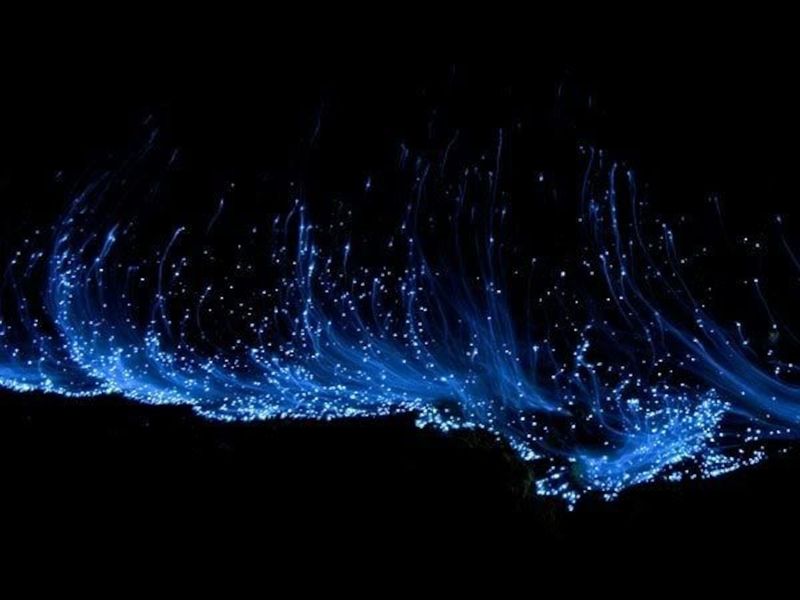
These tiny powerhouses are the true stars of Florida’s glowing bioluminescent bays! No bigger than a pinhead, these single-celled organisms gather by the millions, creating that otherworldly blue glow when disturbed. Last summer, I paddled through a bay so packed with them that each stroke of my oar sent electric-blue ripples spreading like liquid fireworks.
Pyrodinium means ‘whirling fire’ in Latin, perfectly describing how they transform calm waters into a cosmic light show. They thrive in Florida’s warm summer months, especially in the Indian River Lagoon and Mosquito Lagoon.
Their light is actually a defense mechanism—it scares off predators or attracts larger animals to eat whatever is trying to eat them!
Jelly Jewels: Mnemiopsis leidyi (Sea Walnut)
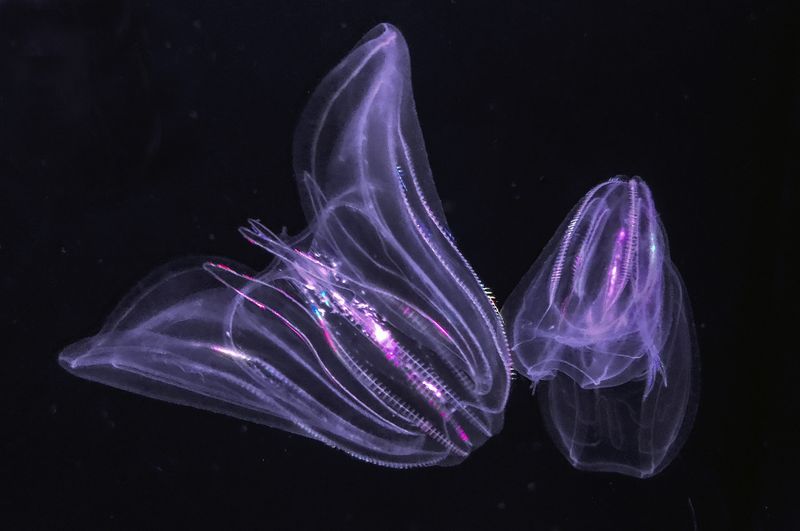
Crystal-clear and comb-shaped, these jellies flash rainbow colors while drifting through Florida’s coastal waters. Unlike true jellyfish, Sea Walnuts won’t sting you—they’re completely harmless to humans! Their transparent bodies catch light like living prisms, creating a mesmerizing disco-ball effect.
The most magical thing about them? They don’t just glow blue like most bioluminescent creatures—they pulse with waves of multicolored light that ripple along their comb rows.
These delicate creatures can be spotted year-round but are especially abundant during spring and fall. Despite their beauty, they’re actually invasive in many parts of the world, though Florida’s waters are part of their native range.
Nature’s Disco Balls: Noctiluca scintillans
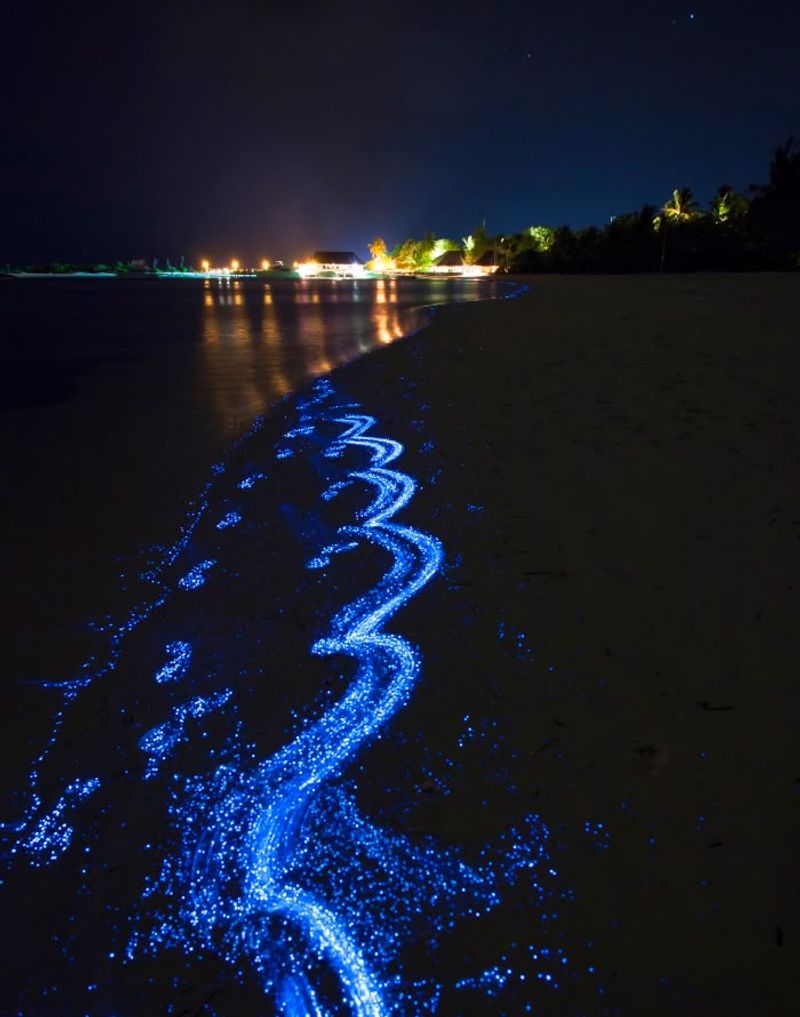
Nicknamed ‘Sea Sparkle,’ these single-celled organisms create the most spectacular light shows along Florida’s shores. When waves crash or fish swim through them, they light up like thousands of underwater fireflies! Their name literally means ‘sparkling night light,’ and boy, do they live up to it.
I’ll never forget wading into a midnight tide near Naples when suddenly my footprints began glowing electric blue. Each step triggered thousands of these tiny creatures to flash their biochemical lights.
They’re most visible during red tide events, creating an ironic beauty from otherwise harmful algal blooms. Their blue glow contrasts with the reddish water, creating a truly alien landscape where every movement triggers sparks of living light.
The Romantic Illuminators: Odontosyllis enopla
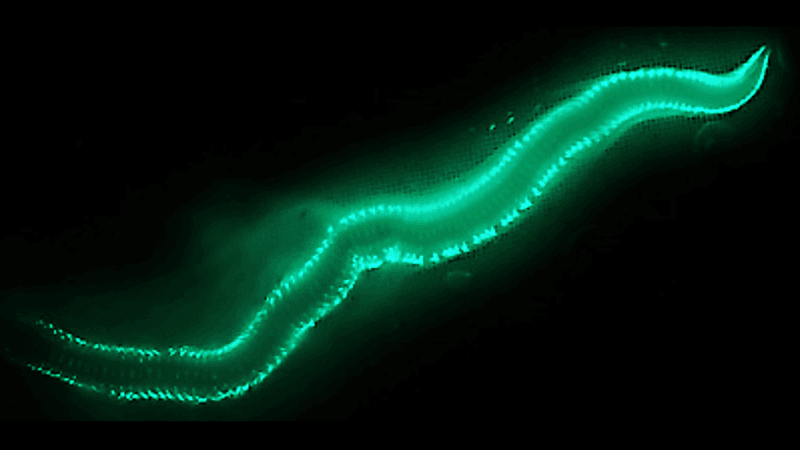
Bermuda Fireworms put on the ocean’s most romantic light show! These small marine worms synchronize their glow with the lunar cycle for an underwater mating display that seems straight out of a fantasy movie. Female worms swim to the surface, releasing a green bioluminescent chemical that attracts males.
The resulting light show happens like clockwork—56 minutes after sunset on the third night after a full moon. Talk about precise timing for a date!
While more famous in Bermuda, populations exist along Florida’s southern coast and Keys. They’re relatively rare sights, making an encounter with these glowing love-seekers a bucket-list experience for marine enthusiasts. Their brief but brilliant displays last only 15-20 minutes.
Living Light Bullets: Vargula hilgendorfii
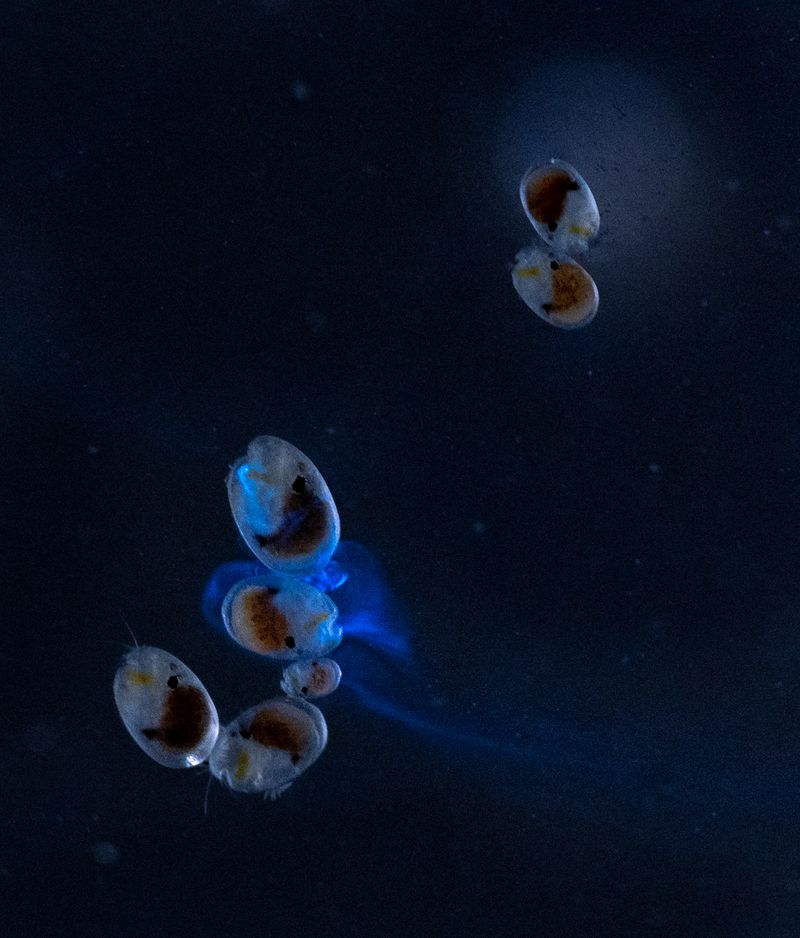
Marine ostracods are the fireflies of the sea! These tiny crustaceans—barely the size of a sesame seed—shoot glowing chemicals into the water like underwater tracer bullets. Unlike most bioluminescent creatures that glow when disturbed, these little daredevils actively squirt their light as a deliberate signal.
Japanese soldiers once collected these creatures during WWII to use as emergency light sources! They’d smear the bioluminescent chemicals on watch faces to read them in the dark.
While more common in Pacific waters, certain species have been spotted along Florida’s Gulf Coast during warm months. Their blue-green light can last for several seconds to minutes—much longer than the quick flash of most marine bioluminescence.
Floating Fire Colonies: Pyrosoma atlanticum
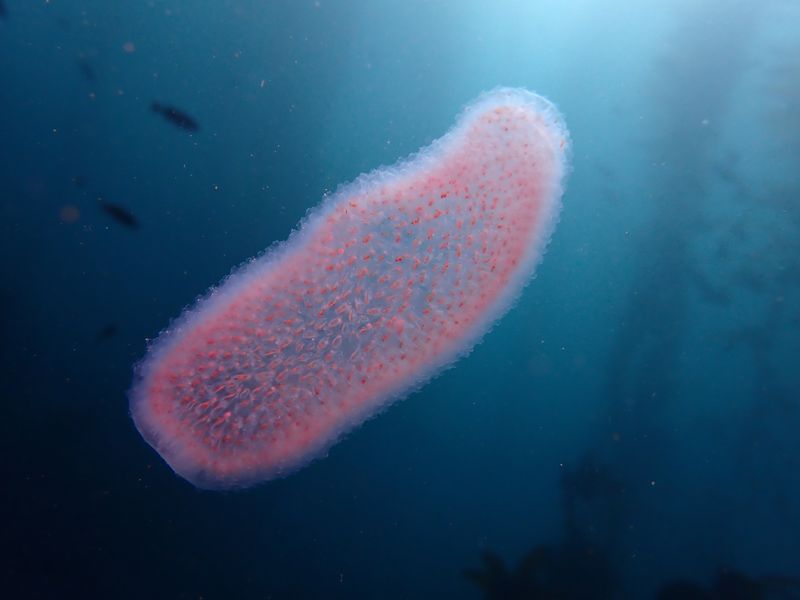
Imagine a glowing underwater pickle that’s actually thousands of tiny animals living together! That’s a pyrosome—a hollow, tube-shaped colony that can grow from inches to over 60 feet long. Each individual is no bigger than a pinhead, but together they create some of the ocean’s most spectacular light displays.
Sailors have reported entire seas glowing with these creatures, creating a dreamlike blue landscape that stretches to the horizon. Their name means ‘fire body’ in Greek, perfectly capturing their intense bioluminescence.
While typically found in deeper waters, strong currents occasionally bring them close to Florida’s shores, especially along the Atlantic coast. They’re harmless to humans and actually quite delicate—a rare case where something so visually dramatic poses absolutely no danger.
Deep-Sea Lanterns: Fringefin Lanternshark
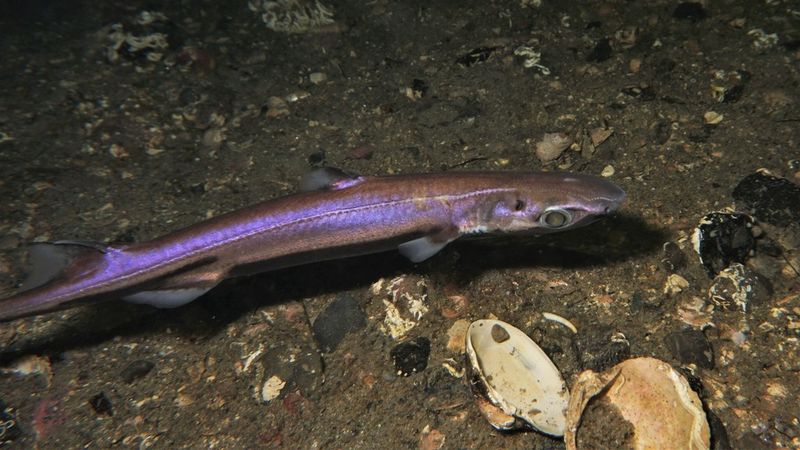
Prowling the deep waters off Florida’s continental shelf, these small sharks bring the sci-fi concept of ‘living neon’ to life! Growing only to about 17 inches, Fringefin Lanternsharks have specialized cells called photophores that create glowing patterns along their bellies and fins.
Unlike the chemical reactions of other bioluminescent creatures, these sharks actually host light-producing bacteria in their specialized organs. This symbiotic relationship helps them communicate, attract prey, and camouflage against downwelling light.
While you won’t spot these during casual beach visits (they live at depths of 600-3000 feet), deep-sea fishing expeditions occasionally encounter them. Their eerie green glow serves as a reminder that Florida’s marine wonders extend far beyond the shoreline into the mysterious abyss.
